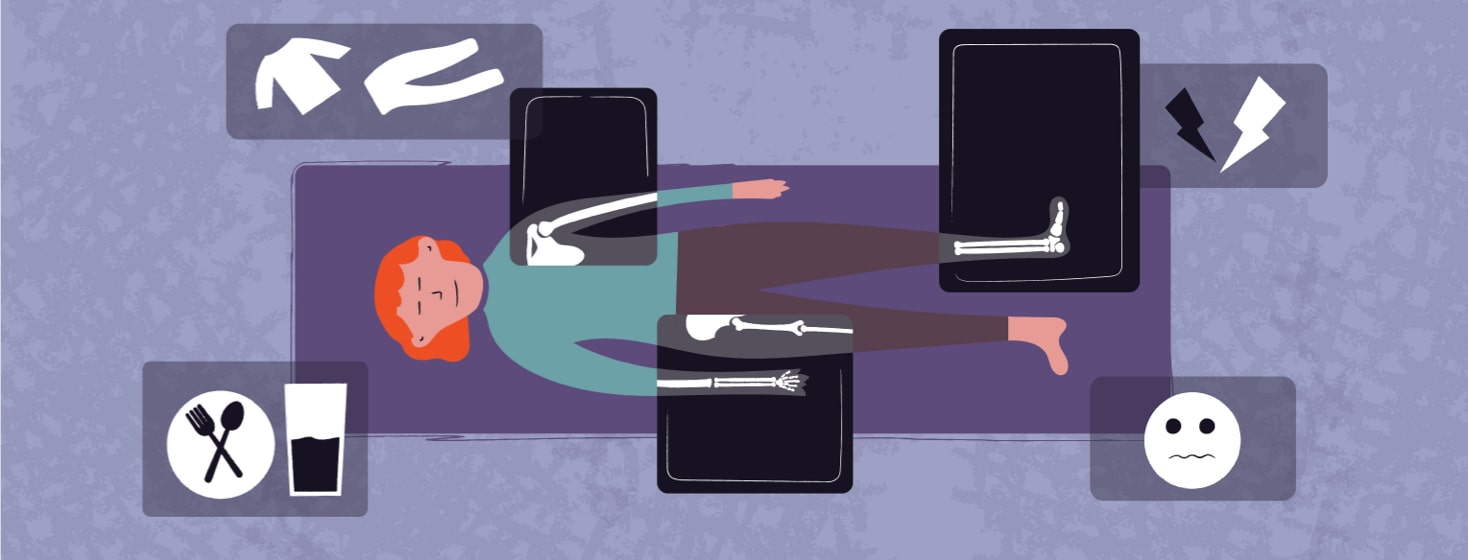Preparing for Imaging Appointments With Ankylosing Spondylitis
Part of life with ankylosing spondylitis includes scans to check for bone change and progression.
My disease activity over recent years has been low so my rheumatologist is happy to go longer between appointments. This means I now have a 2-3 year gap between scans instead of the annual process I previously went through.
Over time I’ve become very familiar with the process of getting x-rays, MRI’s and CT scans and I’ve learned a few tips to make all of these a bit easier. I thought sharing those tips here could be helpful, especially to anyone newly diagnosed and feeling a bit unsure about how to prepare.
Featured Forum
View all responsesClothing
Give some thought to what you’re wearing. It’s best to avoid anything metallic (especially for an MRI), so this means leaving off jewelry and avoiding clothing with metal zippers, buttons or clasps.
Athletic wear such as track pants or leggings and a t-shirt or stretchy top are ideal. Bras can be tricky unless you’ve got something with plastic fasteners or a pull-on crop top.
You will be offered a hospital gown to wear if your clothing isn’t suitable, but I always prefer the comfort and convenience of being able to stay in my own clothes.
Eating and drinking
Follow any instructions you’ve been given about food and drink prior to scans. If you aren’t sure, call and ask ahead of time. Being well hydrated is particularly important if you’re to receive contrast dye injections. Drinking enough fluids in the 48 hours leading up to the scan (not just that morning) means veins will be easier to find when injections are required. It also helps with getting a clear image result when contrast is used.
Managing nerves
While X-rays are usually fairly quick and easy, the confined space of an MRI (and some CT scans) can cause stress for many people.
I find breathing techniques learned in meditation help to calm my nerves when in the enclosed space of the machine. Counting or silently saying the word “breath-ing” slowly as I inhale and exhale helps me focus on something other than my nerves and brings my heart rate down.
If you’re really worried, be sure to talk to the imaging staff ahead of time. These are very common concerns and they will often have solutions for you. It’s sometimes possible to get a light sedation if you feel the claustrophobia will be too much to handle, just be sure to have someone on hand to drive you home.
Make sure you take your face mask off before the MRI begins as this can make breathing more difficult.
Dealing with back pain during scans
Sometimes the worst part about getting scans for those of us with AS is the discomfort involved. Getting on and off a scan table or lying still on your back is much harder for those of us with existing issues.
I used to suffer in silence but these days I make a point of informing the person performing the scan that I have a spinal issue. This has allowed me to get their assistance in various ways, such as a helping hand off the table, taking breaks to move during longer scans, or simply being able to have my knees bent up while lying on my back.
On the day of the scan I make sure to do my yoga stretches beforehand and take some preventative pain relief. I know I will usually come out feeling sore and these strategies both help to offset that for me.
What are your tips for easier imaging appointments?
Community Poll
Have you taken our In America Survey yet?

Join the conversation